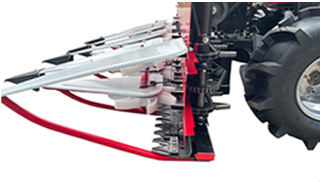Nov . 27, 2024 21:13 Back to list
Techniques for Properly Adjusting Brake Drums for Optimal Vehicle Performance
Adjusting Brake Drums A Comprehensive Guide
Brake drums are a vital component of a vehicle's braking system, particularly in older vehicles and some heavy-duty models. Unlike disc brakes, which have become more popular in modern vehicles, brake drums utilize a different mechanism that can sometimes require more frequent adjustments to ensure optimal performance. In this article, we will explore what brake drums are, how they work, the importance of adjusting them, and the steps involved in the adjustment process.
Understanding Brake Drums
Brake drums are cylindrical components that house the brake shoes. When the driver presses the brake pedal, hydraulic force pushes the brake shoes against the inner surface of the drum, creating friction that slows down the vehicle. This simple yet effective design is common in many vehicles, especially those with rear drum brakes.
Over time, however, brake drums can experience wear and tear due to constant friction and heat generation. This wear can lead to a decrease in braking efficiency, uneven braking, and increased stopping distances. Therefore, it’s essential to maintain and adjust brake drums regularly.
Why Adjusting Brake Drums is Important
Adjusting brake drums ensures that the brake shoes make proper contact with the drum surface, thereby maximizing braking effectiveness. Proper adjustment can lead to several benefits
1. Enhanced Safety Well-adjusted brakes provide reliable stopping power, which is crucial for driver and passenger safety.
2. Improved Performance Adjusting the brake drums ensures that the braking system works efficiently, resulting in shorter stopping distances and smoother deceleration.
3. Extended Lifespan of Components Regular adjustments can prevent premature wear on brake drums and shoes, saving you money on replacements in the long run.
Steps for Adjusting Brake Drums
adjusting brake drums

Adjusting brake drums is a task that can be performed by anyone with basic mechanical skills and tools. Here’s a step-by-step guide
1. Gather Tools and Equipment You will need a jack, jack stands, a lug wrench, a brake adjusting tool, and possibly a screwdriver. Always wear safety glasses and gloves to protect yourself during the process.
2. Lift the Vehicle Use the jack to lift the vehicle and secure it with jack stands. Ensure that the vehicle is on a flat, stable surface.
3. Remove the Wheel Using the lug wrench, remove the lug nuts and take off the wheel to access the brake drum.
4. Inspect the Brake Components Before adjusting, inspect the brake shoes and drum for wear or damage. Replace any components that appear worn out.
5. Access the Adjuster On most drum brake systems, there is an adjuster or a star wheel mechanism located between the brake shoes. This component controls the distance between the shoes and the drum.
6. Adjust the Brake Shoes Using a brake adjusting tool or a screwdriver, turn the adjuster to either increase or decrease the distance between the shoes and the drum. Turn the adjuster until you just start to feel resistance when spinning the drum. This means the shoes are making contact but not too tightly.
7. Test the Adjustment After making the adjustment, rotate the drum manually to ensure it moves freely. If it feels too tight or too loose, readjust accordingly.
8. Reassemble and Test Drive Replace the wheel and lug nuts, lower the vehicle, and take it for a test drive. Pay attention to how the brakes feel during the drive; they should engage smoothly and responsively.
Conclusion
Adjusting brake drums is a critical maintenance task that can directly impact the safety and performance of your vehicle. By taking the time to regularly inspect and adjust your brake drums, you can ensure a safer, smoother driving experience. If you are ever in doubt or uncomfortable performing this adjustment, don’t hesitate to consult a professional mechanic. Remember, when it comes to brakes, safety should always be your top priority.
-
Durable Brake Drum MAZ for Heavy Duty Trucks | High Performance
NewsAug.26,2025
-
FUWA: Premium Quality, Reliable Performance & Innovative Solutions
NewsAug.25,2025
-
Liza Brake Drum: Superior Quality & Performance for Safe Driving
NewsAug.24,2025
-
Iveco Brake Drum | Premium OE Quality for Daily & Eurocargo
NewsAug.22,2025
-
Your Brake Drum Man: Quality & Performance Parts
NewsAug.21,2025
-
Explore Japan: Ultimate Travel Guide & Authentic Experiences
NewsAug.19,2025
